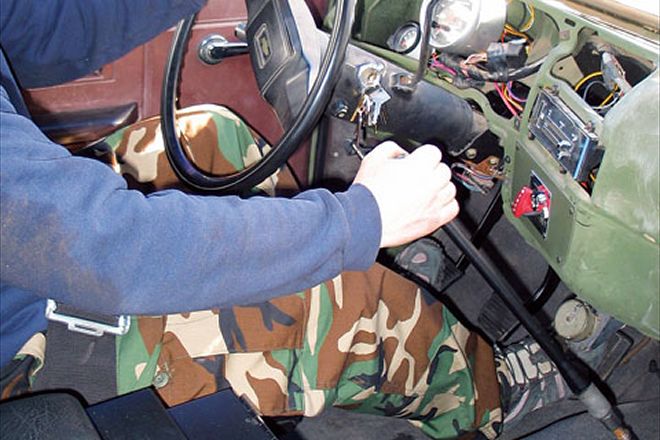
 Fred Williams
Brand Manager, Petersen’s 4Wheel & Off Road
Fred Williams
Brand Manager, Petersen’s 4Wheel & Off Road
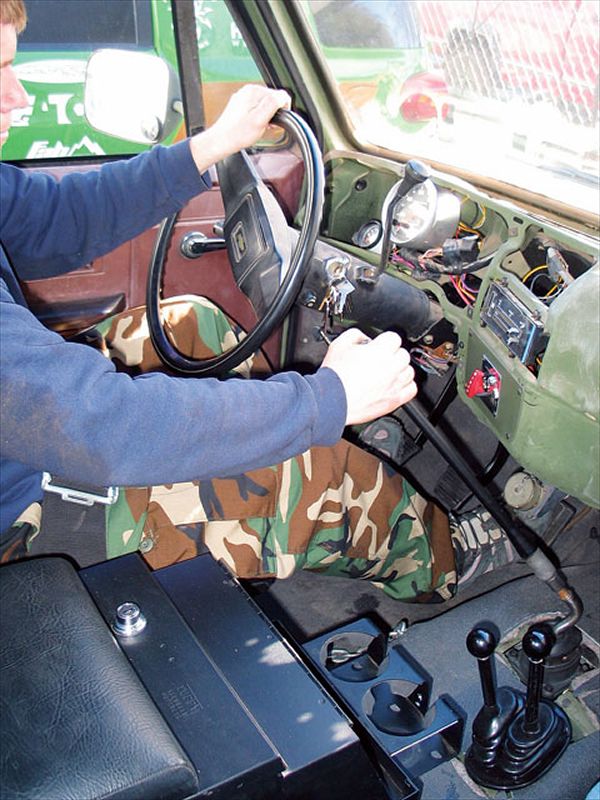
When you're building a truck to take off road, gearing is a pillar of performance. Low gearing for crawlingand turning big tires can't be beat, but if your truck also acts as a daily driver, then you may need both low-end gearing as well as high-speed overdrive options. We recently doubled our crawl ratio, took 25 percent off our high gear ratio, and gave our truck two more gears to play with by replacing the TH400 automatic and NP208 transfer case with an NV4500 five-speed manual and the new 3:1 LoMax 205 transfer case (see our complete LoMax story, "3:1 Low Gears for an NP205," Jan. '07). After swapping out the automatic transmission we also found more performance out of our underpowered V-8 diesel by eliminating the fluid coupler of the torque converter and replacing it with a direct-drive clutch system. Putting a manual trans behind an underpowered engine is a great way to wind a few more ponies from it whether it's a tired diesel or an anemic four-cylinder.
Our test mule for this swap is our '86 Chevy 1-ton known. The truck is an all-around workhorse...from a parts hauler to camping platform to highway cruiser. As much as we like the truck, the sparse interior and rattling diesel made for annoyingly loud road trips, and an overdrive would reduce the engine revs as well as giving us a mileage benefit. Off road we've been very happy with our automatic, but sometimes felt that having the ability to drop the clutch for an aggressive holeshot launch would have given us that extra momentum to get moving through a deep mud hole or up a steep climb we couldn't just crawl. By hooking up with the crew from Gear Tech Heavy Duty we quickly had everything needed to swap our truck from three speeds to five and from two pedals to three. Gear Tech HD specializes in drivetrain parts from transmissions to axles, and its manual transmission swap kit included all the bits so we had no need to go crawling around a junkyard hunting parts. This of course was helped by the fact that our model truck was originally offered with a manual, but never with the five-speed tranny so some innovation was required. As this goes to press the project is being buttoned up, so head over to our Web site (www.4wheeloffroad.com) for our driving impressions and the mileage results by going to the "Man Plan."
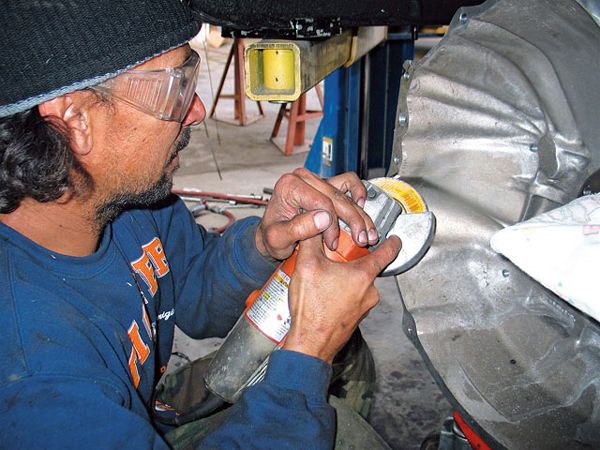
Rather than swap in a lesser starter, Randy took some time with a grinder to carve out the aluminum bellhousing. We're sure we could have spent hours at the local parts yard searching for a diesel bellhousing, but by covering everything with rags and taking our time we soon had the clearance we needed.
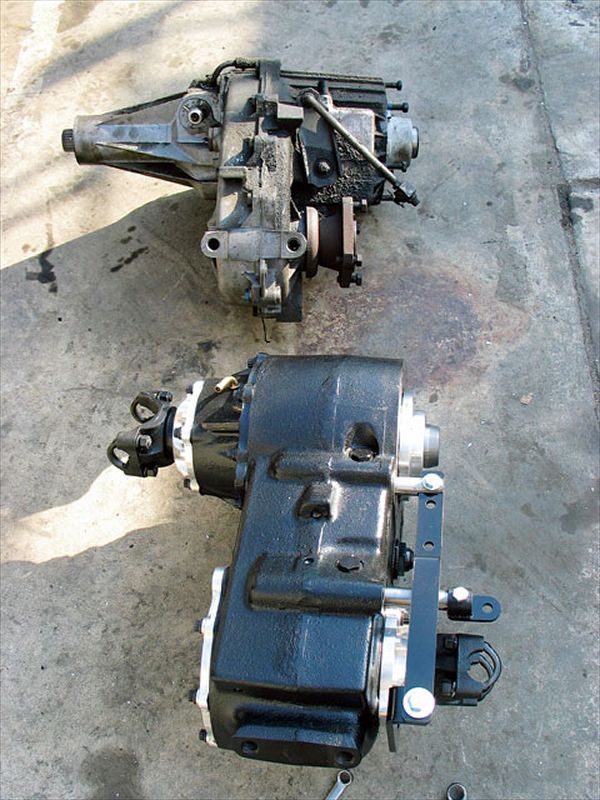
In addition to the overdrive gearing of the NV4500, we also chose to install the new LoMax 205 transfer case from JB Conversions. By replacing the factory NP208 (background) with the 205 (foreground) we went from a 2.6:1 to 3.0:1 low range that resulted in a crawl ratio of 76.7:1 versus the previous 29.4:1 with the automatic. Furthermore we gained low range in two-wheel drive, went from an aluminum case to cast iron, and eliminated the transfer-case slip yoke. We may get some gear noise by replacing the chaindriven 208 with the big gears in the LoMax 205, but that is a sacrifice we are willing to make for the strength gain. Additionally, overall length is reduced from 18 1/2 (208) to 12 1/2 inches (205).
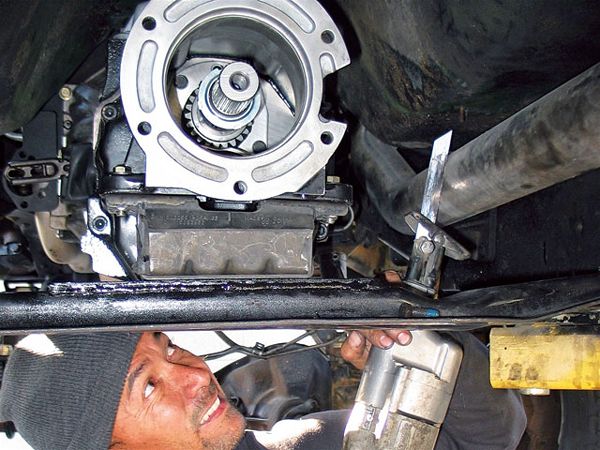
Our mockup with the transfer case found some more speed bumps. The exhaust from our Banks Turbo wanted to occupy the same position as the LoMax 205. Sawzall to the rescue. The factory crossmember and the front output got into a little dispute, and though we had already modified the crossmember with an additional 1/4-inch plate to raise the tail of the transmission, it still wasn't going to work.















